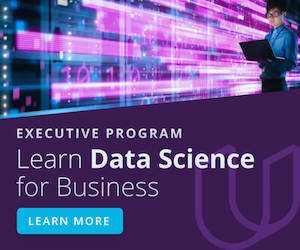Data as a Mass Product: Simplifying Data Accessibility & Usability

Solutions Review’s Contributed Content Series is a collection of contributed articles written by thought leaders in enterprise technology. In this feature, Data Virtuality CEO Dr. Nick Golovin offers commentary on data as a mass product: simplifying accessibility and usability.
As data sources multiply, managing and governing this data becomes increasingly complex, largely due to the surge in data tools. An analysis by BCG reveals that large companies have tripled their use of data tools over the last decade, from 50 to nearly 150.1 This growth brings challenges in data quality and governance, hikes costs, and adds complexity as more non-technical staff engage with data, thereby elevating the demand for self-service data management.
In a traditional paradigm, data was often considered either a business operation byproduct or primarily used to feed reports and dashboards, regarded as ‘first-class citizens.’ However, this approach falls short in the modern, data-driven landscape. Data has evolved into a ‘first-class citizen,’ underlining the significance of treating data as an invaluable asset in its own right. This shift in perception has triggered the development of innovative tools and technologies, designed to manage and safeguard data effectively.
Data as a Mass Product
Surge in the Self-Service Analytics Market
The global self-service analytics market has seen remarkable growth in recent years. According to a report by Market Research Future, the Compound Annual Growth Rate (CAGR) stands at 14.8 percent, with a market size of 14.19 billion US dollars in 2026 (see Table 1). This rapid expansion can be attributed to the increasing demand for easy-to-use data analysis tools that enable non-technical users to make data-driven decisions, empowering organizations to harness the power of their data assets effectively.
The notable growth in the self-service analytics market puts companies under immense pressure to transform their data landscape, accommodating a more diverse user base. Traditional data management and analytics solutions, which require extensive technical expertise and often lead to bottlenecks in data accessibility and usability, are no longer adequate for the fast-paced, data-driven business environment. Companies need to adopt innovative approaches to data management, ensuring that users across the organization can access, analyze, and understand data without relying on IT or data professionals.
The Perils of Data Model Lock-In: Quality and Efficiency at Risk
The widespread use of self-service analytics tools enables business users to interact with data more effectively. However, it may inadvertently result in difficulties maintaining good data quality and catalyze the formation of data silos. These complications emerge when data models become locked within specific analytics tools, demanding the replication of these models for every data consumer. The phenomenon of data model lock-in can instigate a cascade of inefficiencies and data quality concerns, including:
- Inconsistent data representation and interpretation across various tools, leading to unreliable insights and potentially flawed decision-making: Such inconsistency often stems from variations in data models or divergent data transformation and cleansing methods employed by different tools.
- An increased commitment of time and resources to generate and maintain multiple data models, distracting from the primary objective of extracting value from the data: This dispersion of effort can precipitate an overall decline in data quality as data management tasks scatter across various tools and teams.
- An amplified risk of errors and discrepancies in data models due to manual replication processes. This can compromise data quality and credibility. Such errors can propagate across an organization, triggering a domino effect of inaccurate data that can undermine the value of self-service analytics initiatives.
To mitigate the challenges associated with data quality and silos in self-service analytics tools, organizations must prioritize a unified approach to data management. By doing so, they can facilitate seamless data access, promote consistency in data models, and ensure that the data remains reliable and accurate for all users. This approach helps organizations maintain high-quality data and minimize the impact of data silos, fostering better decision-making and data-driven insights.
Data OS: Empowering Data as a First-Class Citizen
What if we had an operating system for the entire data stack like Windows does for the PCs? Inspired by the evolution of Windows, which brought the self-service capabilities for personal computers (PCs), a Data OS could standardize the processes that make data accessible and usable, abstracting away the peculiarities of each data source and providing a unified point of access and language to interact with all sources and tools. The potential benefits of a Data OS are immense, including significantly improving data governance and accessibility, enabling more effective use of data for self-service analytics and other data-driven applications.
A Data OS performs a variety of functions analogous to a traditional operating system. It integrates diverse data sources, comparable to how an operating system manages disparate hardware components. Just as a Kernel in an operating system processes data, a Data OS also does the same. Moreover, it allows manipulation and querying of data through a standardized language, similar to the function of libraries and services in an OS. Lastly, it promotes easy data access to individuals and applications, enabled through its interfaces.
The Emergence of SaaS-based Data Integration Tools
The growing need for proficient data management and integration has sparked the advent of Software as a Service (SaaS) tools. These cloud-based solutions offer significant benefits compared to traditional on-premise data integration tools, such as:
- Lower total cost of ownership, as organizations are freed from the need to invest in hardware or maintenance.
- Faster implementation and deployment times, enabling organizations to rapidly reap the benefits.
- Seamless updates and upgrades, ensuring that organizations always have access to the latest features and improvements.
Platforms resembling a Data OS delivered as SaaS offer several crucial features that promote data accessibility, governance, and usability, aligning with the needs of today’s data-centric organizations:
- Self-service capabilities for non-technical users: Such platforms empower subject matter experts lacking technical data backgrounds to work with data and use it for their daily tasks. This democratization of data access fosters a data-driven culture within organizations and encourages users to regard data as a first-class citizen.
- Holistic approach to data management and integration: Unlike existing tools that tend to focus on individual aspects of data management or integration, leading to a complicated landscape of specialized tools, Data OS offers an all-encompassing and unified perspective for end-to-end data workflows, that is use case oriented. Instead of offering a single data integration approach such as data virtualization, it encompasses data virtualization, ETL/ELT, streaming, and CDC all in one. This allows the user flexibility to choose what best fits a particular use case. This approach simplifies data integration and presents a comprehensive solution for organizations seeking to enhance their data strategy.
- User-friendly interfaces and intuitive tools: To facilitate self-service data management, these platforms feature user-friendly interfaces and intuitive data discovery and preparation tools. These features make self-service data management more accessible, efficient, and effective, contributing to the development of a data-driven culture within organizations that values and leverages data as a strategic asset.
Future Trends: How simplified data accessibility can drive emerging technologies (e.g., AI, machine learning)
Emerging technologies such as artificial intelligence (AI) and machine learning (ML) depend heavily on data. Simplified data access, facilitated by Data OS, can thus accelerate the development of these technologies, improving their predictive abilities and decision-making processes.
Seamless data accessibility also fosters real-time data analysis, a critical aspect of AI and ML applications. It allows for dynamic response to changes, encouraging a more agile and proactive business environment.
Finally, by making data more accessible for non-technical users, the democratization of AI and ML technologies becomes possible, broadening their application across diverse teams within an organization.
On the Horizon: The Paradigm Shift Towards Data as a First-Class Citizen
As organizations grapple with the complexities of modern data management, the concept of Data OS has emerged as a game-changer. It transforms the paradigm of data from an auxiliary asset to a ‘first-class citizen,’ central to decision-making. By integrating disparate
data sources, and simplifying access for non-technical users, a Data OS can democratize data use, improve data governance, and fuel innovation in emerging technologies such as AI and ML. This profound shift towards a more unified and accessible approach to data management heralds a new era of data-driven decision making, offering significant competitive advantage in our increasingly digital world.
- Data as a Mass Product: Simplifying Data Accessibility & Usability - August 15, 2023

 By
By


















